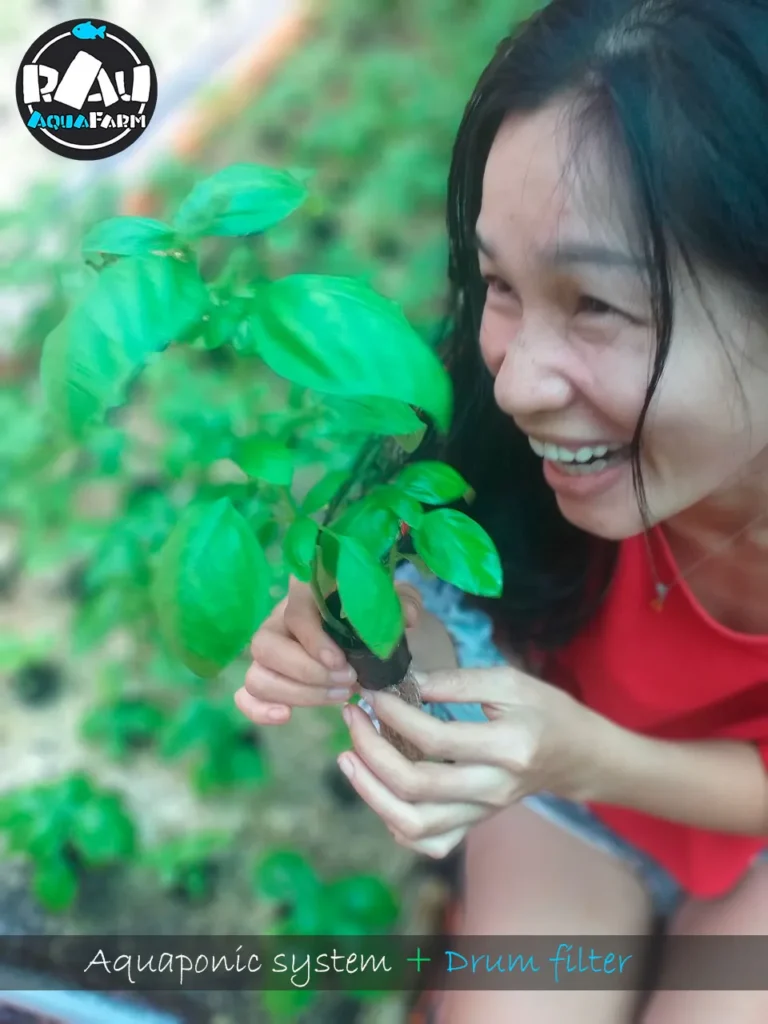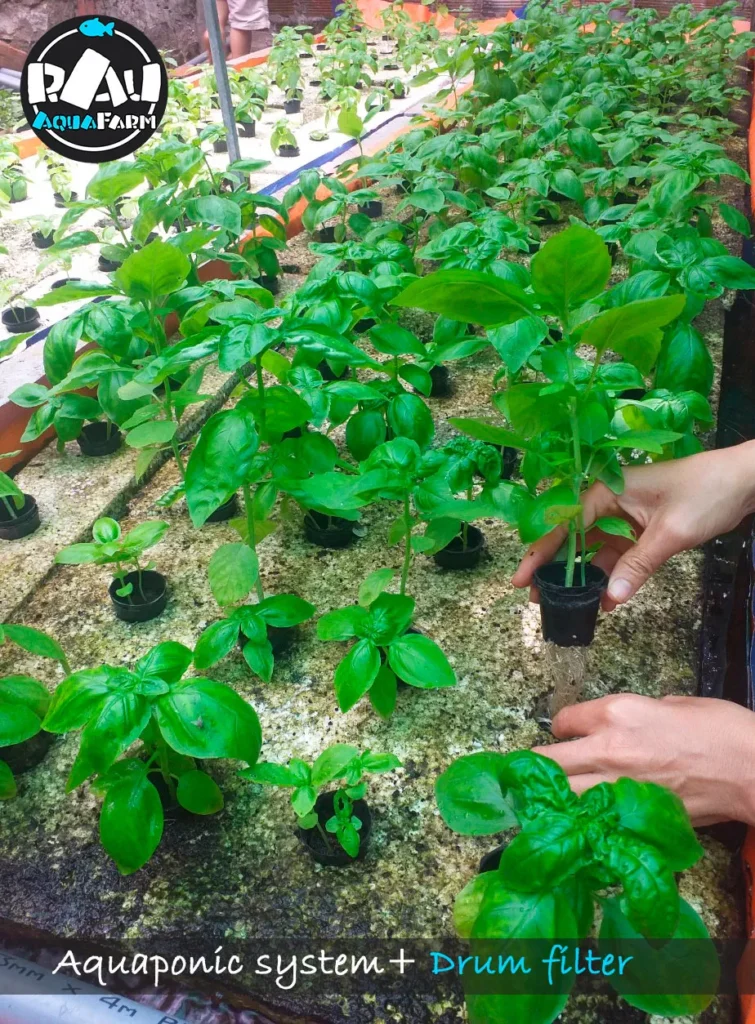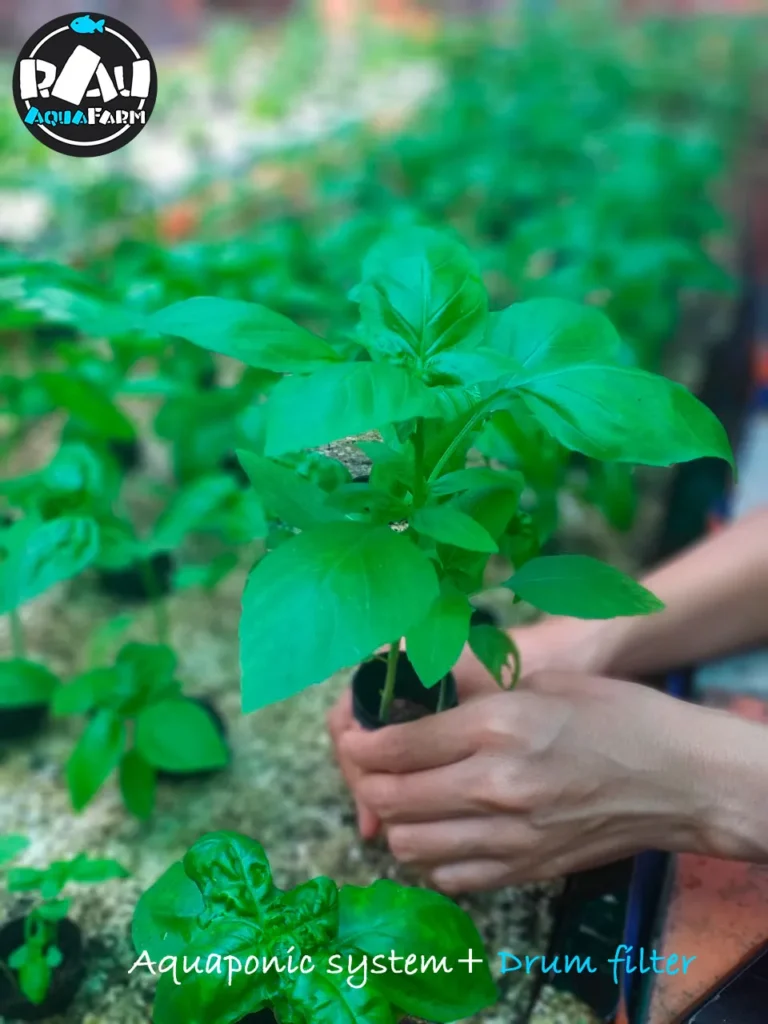

Aquaponics is a system of growing plants and raising fish that combines aquaculture and hydroponics. In aquaponics, fish live in a tank where they produce waste. This waste, rich in ammonia, is converted by beneficial bacteria into nitrites and then into nitrates, which serve as nutrients for plants. The plants absorb these nutrients, purifying the water, which is then returned to the fish tank. This creates a closed-loop ecosystem where fish and plants live in symbiosis, mutually supporting each other.
Various plants and fish are suitable for aquaponic systems. Popular plants include leafy greens like lettuce, basil, spinach, and arugula, as well as tomatoes, cucumbers, and peppers. For fish, tilapia, catfish, carp, and trout are commonly used. It is important to choose species that adapt well to the system’s conditions and can coexist peacefully. Additionally, the water temperature and nutrient requirements need to be considered to provide optimal conditions for both components of the system.
Building an aquaponic system involves several steps: 1) Choose a location and determine the size of the system. 2) Gather the main components: fish tank, plant beds, water pump, and filtration. 3) Set up the system: place the fish tank, connect the pump for water circulation, and install the plant beds above the water level. 4) Add a planting medium such as gravel or clay. 5) Start the system by filling it with water and adding fish. 6) Introduce plants and monitor water conditions, pH levels, and ammonia. Regular maintenance and system checks will help keep it running efficiently.
Advantages of aquaponics include: 1) Eco-friendliness: the closed system minimizes waste. 2) Water savings: aquaponics uses up to 90% less water compared to traditional farming. 3) Faster plant growth: constant access to nutrients. 4) No soil-borne diseases. Disadvantages: 1) High initial costs for setting up the system. 2) Need for constant monitoring and maintenance. 3) Dependence on electricity to run pumps and filtration. 4) Potential difficulties in balancing the ecosystem and preventing diseases.
The cost of setting up an aquaponic system varies depending on its size and complexity. Small home systems can range from $500 to $2,000. Medium systems suitable for small commercial farms can cost from $3,000 to $10,000. Large commercial systems can cost tens of thousands of dollars. The cost includes fish tanks, plant beds, pumps, filtration systems, lights, and other components. Additionally, consider the ongoing costs of maintenance and electricity to keep the system operational.
Maintaining an aquaponic system includes: 1) Daily inspection of fish and plant health. 2) Regular water testing for pH, ammonia, nitrites, and nitrates. 3) Cleaning filters and checking pumps for proper operation. 4) Adjusting water levels and adding fresh water as needed. 5) Proper feeding of fish. 6) Checking plant health and removing damaged parts. 7) Monitoring water temperature, especially during extreme weather conditions. Regular maintenance helps prevent problems and keeps the system in optimal condition.
Aquaponics uses two main types of filtration: mechanical and biological. Mechanical filtration removes solid particles such as fish waste and uneaten food using screens, drum filters (RDF), or sand filters. Biological filtration involves using biofilters populated with nitrifying bacteria that convert ammonia and nitrites into nitrates, which are safe and beneficial for plants. Both filtration systems work together to maintain water cleanliness and provide essential nutrients to plants.
Plants in aquaponics need essential macro- and micronutrients such as nitrogen (N), phosphorus (P), potassium (K), calcium (Ca), magnesium (Mg), sulfur (S), as well as micronutrients including iron (Fe), manganese (Mn), boron (B), zinc (Zn), copper (Cu), and molybdenum (Mo). Most of these nutrients come from fish waste processed by biofilters. However, additional micronutrients, especially iron, may need to be supplemented for optimal plant growth. Regular water testing helps determine the need for additional nutrients.
The size of the aquarium for an aquaponic system depends on the volume of plants and the number of fish being raised. For small home systems, a 100-200 liter tank may be sufficient. Medium systems typically require tanks from 500 to 1000 liters. Large commercial systems use tanks of several thousand liters. It is important to consider the ratio between water volume and planting area to ensure sufficient nutrients and ecosystem stability. The recommended ratio is 1 kg of fish per 50-100 liters of water.
To prevent diseases and pests in aquaponics: 1) Maintain high water quality by regularly testing and adjusting pH, ammonia, and nitrate levels. 2) Keep the system clean by removing organic waste and uneaten food. 3) Quarantine new fish and plants before adding them to the system. 4) Feed fish properly to avoid overfeeding. 5) Regularly inspect plants for pests and diseases and use biological control methods if necessary. 6) Ensure proper aeration and water circulation to prevent stagnation and the growth of pathogenic microorganisms.
The ratio of fish, water and plants
In aquaponics, the balance between water, fish, and plants is crucial for maintaining a healthy and productive system. Here are the key ratios and guidelines:
For a small home aquaponics system:
By following these guidelines, you can maintain a balanced aquaponics system where fish and plants thrive together, creating a sustainable and productive environment.
Example of work


Aquaponics farm showcased in the photo features long trays filled with water. The base of these trays is constructed from brick and cement, and covered with waterproof material. Styrofoam floats on the surface, with cut-out holes for small plastic pots holding seedlings. As the seedlings grow, their roots extend into the water, absorbing maximum nutrients.

The growth rate of basil in an aquaponics system is determined by several key factors. In aquaponics, plants have constant access to nutrient-rich water, which is obtained by processing fish waste in biofilters. This water contains all the necessary macro- and microelements, such as nitrogen, phosphorus and potassium, in an easily digestible form. Therefore, basil roots can continuously absorb nutrients, promoting fast and healthy growth. In addition, the aquaponics system provides a stable supply of oxygen and maintains optimal humidity and temperature conditions, creating an ideal environment for vegetation. As a result, basil in an aquaponics system grows significantly faster and has a higher nutritional value compared to traditional growing methods.

Installing a filtration system in an aquaponics system. The drum filter in the photo takes the brunt of cleaning the aquaponic farm; After the drum filter, the water enters the biofilter.
The filtration system is very important for aquaponics we can offer you a store of filters perfectly suited for the aquaponics system
Here are filters that are perfect for aquaponics systems, different sizes of filtration systems.